A
re there dangerous animals on Cozumel? If you’re concerned that you might meet your end on the island, you can let out a sigh of relief. Cozumel’s wildlife, while not tame as kittens, doesn’t include anything you’ll need to outrun. This blog tells you what you need to know to explore the island safely. And speaking of safety, take a look at one of our blogs about why Cozumel is safe to visit in 2024. Let’s talk about all of the cool and the few semi-dangerous species native to the island.
Wildlife in Cozumel
Cozumel is home to a diverse range of wildlife, including reptiles, marine life, and insects. While most of these creatures are harmless, some can pose a potential threat when you surprise them. The best way to prepare for your visit to our island is to understand the local landscape.
Cozumel is a stunning island in the Caribbean Sea off the eastern coast of Mexico’s Yucatán Peninsula, in fact it’s only twenty miles away. As a visitor to the island, it’s a brand new paradise. However, tourists aren’t Cozumel’s only wildlife! It’s also a haven for a diverse range of native animals. Its unique geographic location and lush habitats create the perfect setting for a variety of species, many of which are endemic to the island.

Animals Native To Cozumel
-
Cozumel Raccoon
-
Cozumel Emerald (a type of hummingbird)
-
Splendid Tody-Flycatcher
-
Cozumel Vireo
-
Cozumel Thrasher
-
Cozumel Wren
-
Pygmy Raccoon
-
Cozumel Island Coati
-
Yucatan Woodpecker
-
Black Catbird
Cozumel Island Coati
Cozumel Island Coatis are known for their agility and are often found climbing trees. They are omnivorous, feeding on a variety of fruits, insects, and small vertebrates. They are social, typically seen in groups, especially females with their young ones. The males, however, tend to be more solitary.
They have a long snout, which is quite flexible and used for foraging food. Their fur is typically brownish, and they possess a distinctive, ringed tail that adds to their characteristic appearance.
Coatis are not typically considered dangerous to humans. They are shy animals. However, like any animal you might meet in their habitat, when cornered they can be defensive. When visiting any habitat with local wildlife, you should strive to observe them from a safe distance.
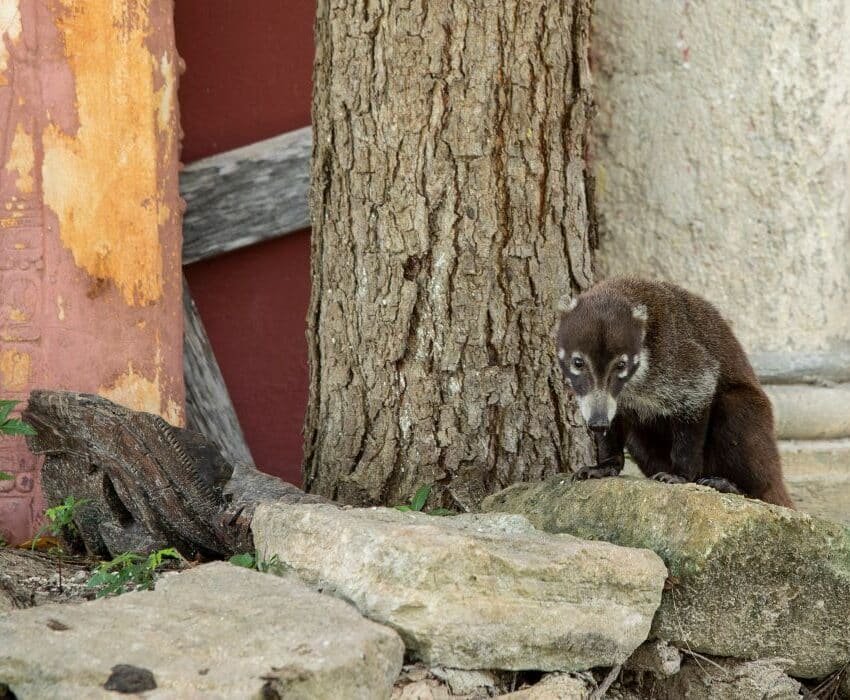
Did you know in Cozumel the Scorpion fish is a highly sought after fish in the kitchen? Yes people eat them!.
fun fact
Coral Snakes and Boa Constrictors
To stay safe while exploring Cozumel, you should know that the island’s wildlife includes two snakes that are dangerous. The Coral Snake and Boa Constrictor can be lethal to humans. The coral snake is venomous and easily identifiable by its red, yellow, and black stripes. The boa constrictor, on the other hand, catches and kills its prey by constricting itself around the animal until it no longer can breath. Because it blends in well with its surroundings, it’s more difficult to spot.
To avoid any encounters with either snake, it’s best to stick to designated paths and avoid walking through thick vegetation.

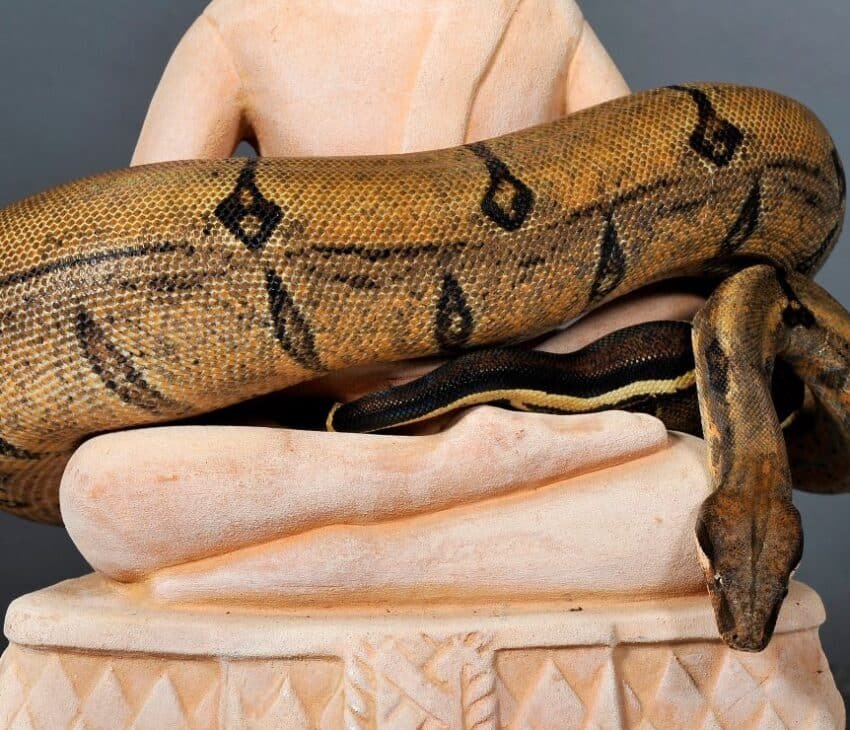
Reptiles in Cozumel
If you’re heading out to explore Cozumel, you’ll most likely encounter a green iguana. It’s one of the most commonly encountered reptiles on the island. Green Iguanas can grow up to six feet long and are often found lounging in the sun or climbing trees. While they may look intimidating, they are harmless to humans, and definitely worth one of your vacation photos.
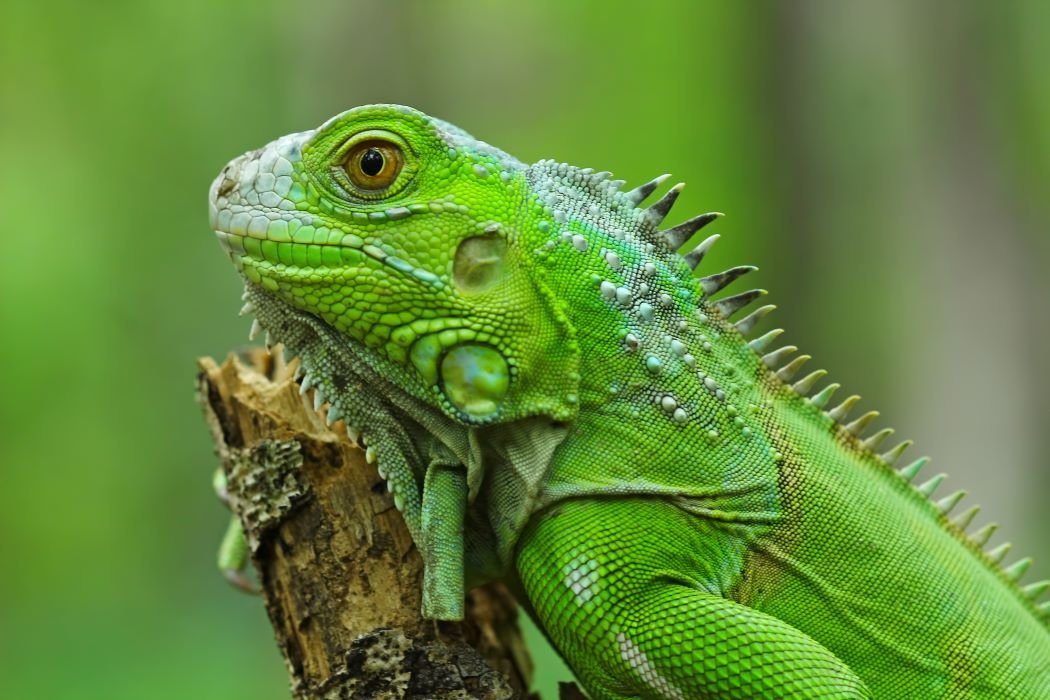
On the other hand, crocodiles are occasionally seen in the more secluded areas of the island, such as lagoons or mangroves. As you likely already know, you should keep a safe distance from them animals and only swim in areas designated as safe zones. Don’t take for granted that any body of water on the island is safe to enter. To learn more about swimming on or around the island, Read our cozumel swimming safety for valuable tips before you dive in.
Dangerous Marine Life in Cozumel | Coral Reefs, Jellyfish & Stingrays
Cozumel is home to a variety of marine life, including some that are potentially dangerous. If you plan on swimming, snorkeling, or scuba diving, remain aware of your surroundings. Avoid touching or getting too close to coral reefs, which can be sharp or are homes for marine life with that protect themselves in a way that can put a visitor at risk. Another reason to avoid getting to close to the reefs is that they are incredibly delicate and sensitive to sunscreen and touch. With the planet’s rising temperatures, coral reefs around the world exist in a state of higher stress. Be kind. Don’t touch and no sunscreen!
As you already know, jellyfish and stingrays are a concern no matter where you are in the ocean. Their stings can be painful and frightening if you either meet a more venomous member of the species or are speared in a lethal location.
In the video below you’ll get an idea of how close you can get to marine wildlife while on tours and excursions. One of the best snorkeling tours in cozumel (a three hour tour) is a safe way to get close. Why are jellyfish dangerous? They can deliver a painful sting that results in skin irritation and rashes. If stung, rinse the affected area with vinegar and seek medical attention if the symptoms worsen.
Fire corals, another ocean inhabitant that’s found on the ocean floor, can also cause a painful sting that can last for days. Stay safe by viewing these underwater species at a distance–use that “close-up” option on your phone to get a better loo
Poisonous Insects
The most commonly found poisonous insects in Cozumel are scorpions and spiders. The Bark Scorpion, in particular, can be dangerous to a human if they’re stung, leading to pain, swelling, and even muscle contractions. To avoid any encounters with poisonous insects, make sure you’re wearing closed-toe shoes and avoid walking around barefoot when heading out of your home base. We highly recommend shaking out your shoes before putting them on.
As true as it is anywhere in the world, avoid leaving food out, unless you’d like some semi-permanent friends.
Safety Precautions
When exploring Cozumel, it’s important to take necessary safety precautions. Always wear closed-toe shoes, long pants, and long-sleeved shirts to protect yourself from any potential bites or stings. And when in areas with thick vegetation, use a walking stick to clear the path ahead.
Remember, if you do encounter a venomous creature or get stung by a poisonous insect, seek medical attention immediately.
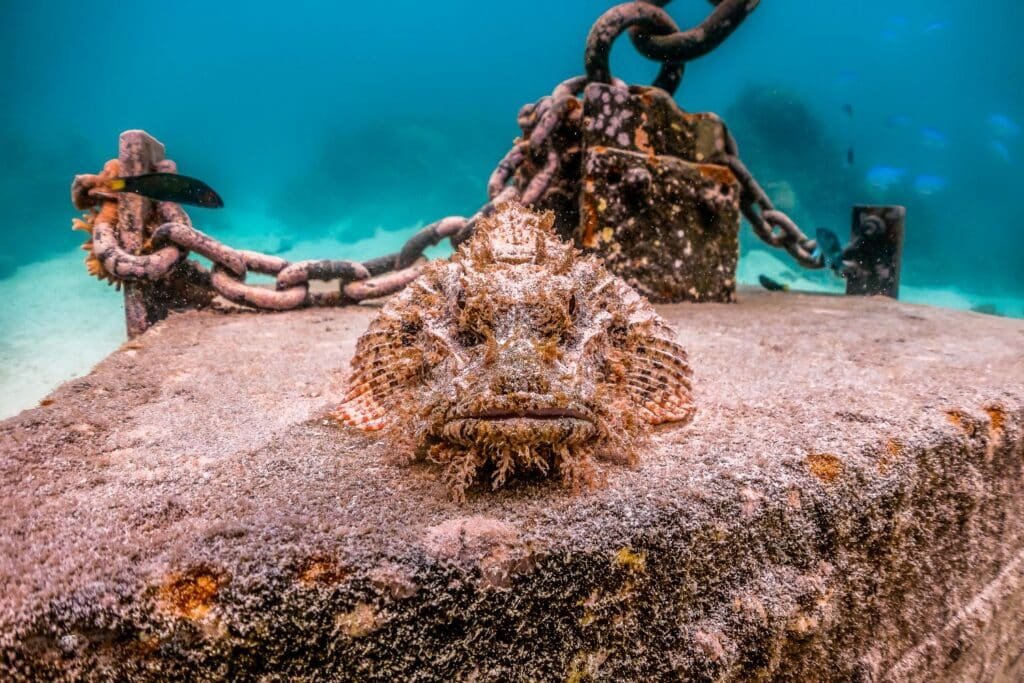
Scorpionfish
This is a venomous species, often mistaken for coral or seaweed due to its camouflaged appearance on the ocean floor. They blend in so well to the reef is should be a crime–seriously it’s insane how well they blend in! They possess toxic spines along their dorsal ridge, which can cause injuries requiring immediate medical attention. Learn more about facts of the scorpion fish.

Sea Urchins on the Eastern Side of the Island
When snorkeling around corals and rocks, be cautious of where you place your hands. Contact with sea urchin spines can lead to punctures, releasing toxins that cause bleeding and infection. These spines can remain embedded under the skin for years. If injured, immerse the area in hot water promptly.
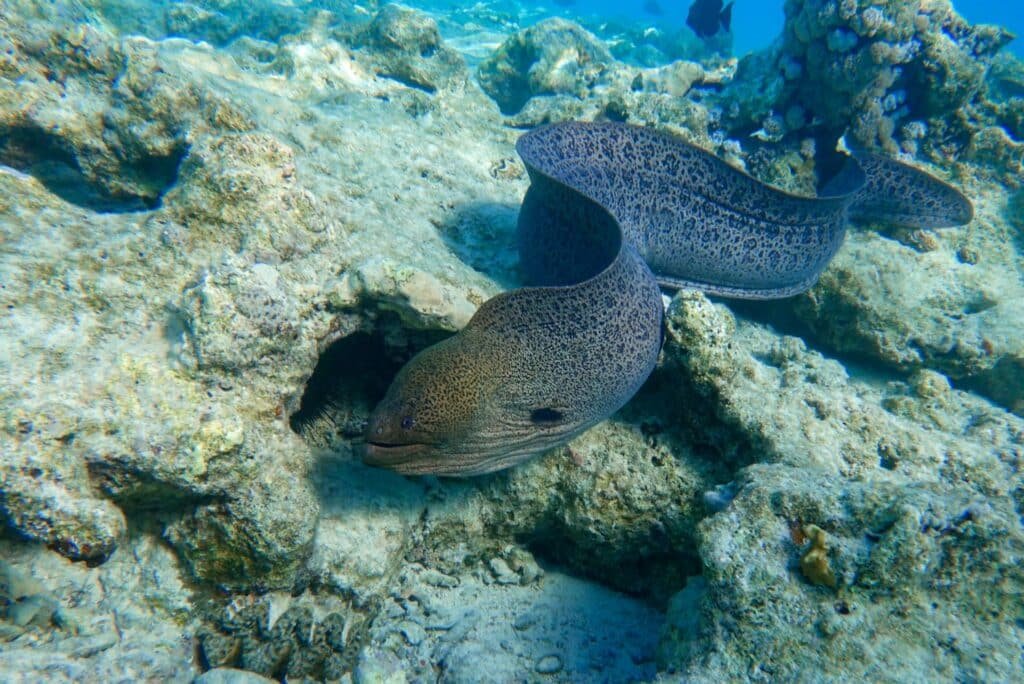
Moray Eels are Near the Coral Reef)
While generally not aggressive, disturbing them in their dens can result in a bite. Their backward-curving teeth make it challenging to free your hand without pushing it in deeper. Additionally, the slime in their mouths, although not toxic, harbors bacteria that can lead to infections.
Frequently Asked Questions
Are there dangerous animals in Cozumel?
Cozumel is home to a variety of wildlife, including some potentially dangerous animals. However, with proper precautions and awareness, the risk of encountering these animals can be minimized.
What wildlife can I expect to see in Cozumel?
Cozumel boasts a diverse array of wildlife, ranging from colorful marine life to reptiles and insects. Visitors may come across species such as turtles, crocodiles, scorpions, and various species of snakes.
How can I stay safe while exploring Cozumel?
To ensure your safety in Cozumel, it’s important to follow some basic guidelines. This includes respecting the local wildlife, avoiding touching or provoking any animals, and being aware of your surroundings at all times. Additionally, it’s recommended to wear appropriate footwear, use insect repellent, and seek local advice or guidance if needed.
What should I do if I encounter a venomous creature?
If you come across a venomous creature in Cozumel, such as a snake or a poisonous insect, it’s crucial to keep a safe distance and avoid any sudden movements. Do not try to handle or capture the animal. Instead, calmly and slowly back away from the creature and seek medical attention if you’ve been bitten or stung.
Is it safe to snorkel or scuba dive in Cozumel?
Cozumel is renowned for its breathtaking underwater ecosystems, making snorkeling and scuba diving popular activities. However, it’s important to adhere to safety guidelines. This includes choosing reputable dive operators, being certified and experienced if scuba diving, and respecting marine life and coral reefs by avoiding touching or stepping on them.








